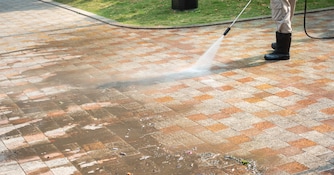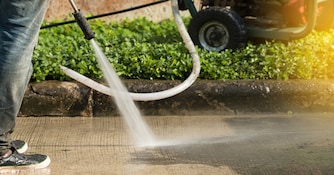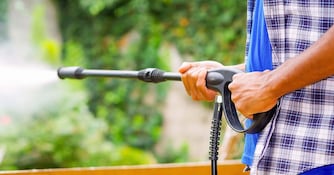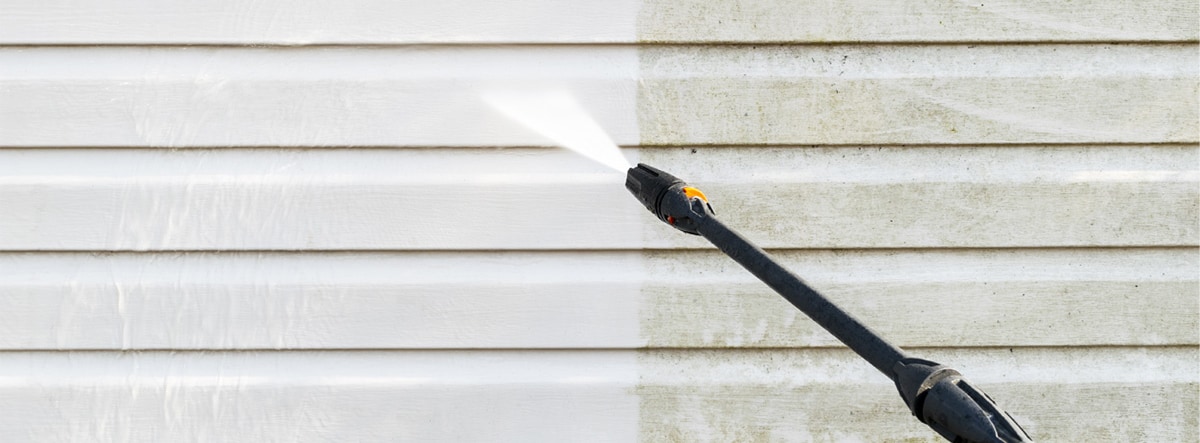
{"storeInfo":{"id":6,"name":"Pressure Washers Direct","domain":"pressurewashersdirect.com","initials":"PWD","url":"https:\/\/www.pressurewashersdirect.com","path":"\/var\/www\/vhosts\/pwd.com\/"},"headerNavJSON":"{\"MainLinks\":[{\"URL\":\"\\\/power\\\/pressure-washers.html\",\"displayText\":\"All Pressure Washers\",\"sectionLinks\":{\"columns\":\"6\",\"linkItems\":[{\"URL\":\"\\\/power\\\/pressure-washers.html\",\"imageURL\":\"\\\/nav-image\\\/100\\\/Simpson ms60773_193ca50be4ad6d257e9db8a5e93508df.jpg\",\"displayText\":\"Shop All\"},{\"URL\":\"\\\/power\\\/wall-mount-electric-pressure-washers.html\",\"imageURL\":\"\\\/nav-image\\\/100\\\/BE 93232-1_94601980917e401d85e349de5622aaf0.png\",\"displayText\":\"Wall Mount\"},{\"URL\":\"\\\/power\\\/portable-pressure-washers.html\",\"imageURL\":\"\\\/nav-image\\\/100\\\/Website Portable Paint Sprayers-1_3ffd0f1e5dbe8ac8e452cadd140a82e0.png\",\"displayText\":\"Portable\"},{\"URL\":\"\\\/power\\\/residential-pressure-washers.html\",\"imageURL\":\"\\\/nav-image\\\/100\\\/BE BE317RA-1_39d43232c6be7fb8ac71707b9cce5847.png\",\"displayText\":\"Homeowner\"},{\"URL\":\"\\\/power\\\/semi-pro-pressure-washers.html\",\"imageURL\":\"\\\/nav-image\\\/100\\\/Simpson alh4240_4b557496f191edfe36943ad7fdb2b5c8.jpg\",\"displayText\":\"Semi-Pro\"},{\"URL\":\"\\\/power\\\/commercial-pressure-washers.html\",\"imageURL\":\"\\\/nav-image\\\/100\\\/PPS2533HCI_8e0704db9bd1cb372a33189c2e35b80c.jpg\",\"displayText\":\"Commercial\"}]},\"subCategories\":[{\"URL\":\"\\\/power\\\/pressure-washers.html\",\"type\":\"list\",\"title\":\"Shop by Temperature\",\"linkItems\":[{\"URL\":\"\\\/power\\\/cold-water-pressure-washers.html\",\"displayText\":\"Cold Water\"},{\"URL\":\"\\\/power\\\/warm-water-pressure-washers.html\",\"displayText\":\"Warm Water\"},{\"URL\":\"\\\/power\\\/hot-water-pressure-washers.html\",\"displayText\":\"Hot Water\"}]},{\"URL\":\"\\\/power\\\/shop-by-psi.html\",\"type\":\"list\",\"title\":\"Shop by PSI\",\"linkItems\":[{\"URL\":\"\\\/power\\\/60-psi-2500-psi.html\",\"displayText\":\"60-2500 PSI\"},{\"URL\":\"\\\/power\\\/2501-psi-3000-psi.html\",\"displayText\":\"2501-3000 PSI\"},{\"URL\":\"\\\/power\\\/3001-psi-3500-psi.html\",\"displayText\":\"3001-3500 PSI\"},{\"URL\":\"\\\/power\\\/3501-psi-4000-psi.html\",\"displayText\":\"3501-4000 PSI\"},{\"URL\":\"\\\/power\\\/4000-psi-up.html\",\"displayText\":\"4001+ PSI\"}]},{\"URL\":\"\\\/shopbybrand.php\",\"type\":\"list\",\"title\":\"Shop by Brands\",\"linkItems\":[{\"URL\":\"\\\/power\\\/simpson-pressure-washers.html\",\"displayText\":\"Simpson\"},{\"URL\":\"\\\/power\\\/generac-pressure-washers.html\",\"displayText\":\"Generac\"},{\"URL\":\"\\\/power\\\/dewalt-pressure-washers.html\",\"displayText\":\"DEWALT\"},{\"URL\":\"\\\/power\\\/ar-pressure-washers.html\",\"displayText\":\"AR Blue Clean\"},{\"URL\":\"\\\/power\\\/be-pressure-washers.html\",\"displayText\":\"BE\"}]},{\"URL\":\"\\\/stories\\\/343-How-to-Pick-the-Perfect-Pressure-Washer.html\",\"type\":\"image\",\"title\":\"Buyer's Guide\",\"imageURL\":\"\\\/nav-article-image\\\/305\\\/social_img_343.jpg\",\"linkItems\":[],\"displayText\":\"Pressure Washer Buyer's Guide\"}]},{\"URL\":\"\\\/power\\\/gas-pressure-washers.html\",\"displayText\":\"Gas Pressure Washers\",\"sectionLinks\":{\"columns\":\"6\",\"linkItems\":[{\"URL\":\"\\\/power\\\/gas-pressure-washers.html\",\"imageURL\":\"\\\/nav-image\\\/100\\\/gas-6-1.jpg\",\"displayText\":\"All Gas\"},{\"URL\":\"\\\/power\\\/california-approved-pressure-washers.html\",\"imageURL\":\"\\\/nav-image\\\/100\\\/Simpson alh4240_4b557496f191edfe36943ad7fdb2b5c8.jpg\",\"displayText\":\"2024 California Approved\"},{\"URL\":\"\\\/power\\\/carb-compliant-pressure-washers.html\",\"imageURL\":\"\\\/nav-image\\\/100\\\/Cold_Water_PWD_719b47a34b3d3ee89b3946ac048251ba.jpg\",\"displayText\":\"Low Emissions\"},{\"URL\":\"\\\/power\\\/gas-carted-pressure-washers.html\",\"imageURL\":\"\\\/nav-image\\\/100\\\/Hot_Water_PWD_1c251eaeb9dd74f128f3e0ce9e9bb815.jpg\",\"displayText\":\"Carted\"},{\"URL\":\"\\\/power\\\/gas-skid-pressure-washers.html\",\"imageURL\":\"\\\/nav-image\\\/100\\\/6115PRO_61f870db2032856032e4b6f83acce535.jpg\",\"displayText\":\"All Skids\"},{\"URL\":\"\\\/power\\\/gas-pressure-washers-under-1000.html\",\"imageURL\":\"\\\/nav-image\\\/100\\\/PPS2533HCI_8e0704db9bd1cb372a33189c2e35b80c.jpg\",\"displayText\":\"Under $1,000\"}]},\"subCategories\":[{\"URL\":\"\\\/power\\\/gas-pressure-washers.html\",\"type\":\"list\",\"title\":\"Shop by Temperature\",\"linkItems\":[{\"URL\":\"\\\/power\\\/gas-cold-water-pressure-washers.html\",\"displayText\":\"Cold Water\"},{\"URL\":\"\\\/power\\\/warm-water-gas-pressure-washers.html\",\"displayText\":\"Warm Water\"},{\"URL\":\"\\\/power\\\/gas-hot-water-pressure-washers.html\",\"displayText\":\"Hot Water\"}]},{\"URL\":\"\\\/power\\\/gas-pressure-washers.html\",\"type\":\"list\",\"title\":\"Shop by Engine\",\"linkItems\":[{\"URL\":\"\\\/power\\\/honda-gas-engine-pressure-washers.html\",\"displayText\":\"Honda\"},{\"URL\":\"\\\/power\\\/vanguard-gas-engine-pressure-washers.html\",\"displayText\":\"Vanguard\"},{\"URL\":\"\\\/power\\\/kohler-gas-engine-pressure-washers.html\",\"displayText\":\"Kohler\"},{\"URL\":\"\\\/power\\\/powerease-gas-engine-pressure-washers.html\",\"displayText\":\"Powerease\"},{\"URL\":\"\\\/power\\\/lifan-gas-engine-pressure-washers.html\",\"displayText\":\"Lifan\"}]},{\"URL\":\"\\\/shopbybrand.php\",\"type\":\"list\",\"title\":\"Shop by Brand\",\"linkItems\":[{\"URL\":\"\\\/power\\\/simpson-gas-pressure-washers.html\",\"displayText\":\"Simpson\"},{\"URL\":\"\\\/power\\\/be-gas-pressure-washers.html\",\"displayText\":\"BE\"},{\"URL\":\"\\\/power\\\/pressure-pro-gas-pressure-washers.html\",\"displayText\":\"Pressure Pro\"},{\"URL\":\"\\\/power\\\/dirt-killer-gas-pressure-washers.html\",\"displayText\":\"Dirt Killer\"},{\"URL\":\"\\\/power\\\/easy-kleen-gas-pressure-washers.html\",\"displayText\":\"Easy-Kleen\"},{\"URL\":\"\\\/power\\\/mi-t-m-gas-pressure-washers.html\",\"displayText\":\"Mi-T-M\"}]}]},{\"URL\":\"\\\/power\\\/electric-pressure-washers.html\",\"displayText\":\"Electric Pressure Washers\",\"sectionLinks\":{\"columns\":\"6\",\"linkItems\":[{\"URL\":\"\\\/power\\\/electric-pressure-washers.html\",\"imageURL\":\"\\\/nav-image\\\/100\\\/BE 93232-1_94601980917e401d85e349de5622aaf0.png\",\"displayText\":\"All Electrics\"},{\"URL\":\"\\\/power\\\/consumer-electric-pressure-washers.html\",\"imageURL\":\"\\\/nav-image\\\/100\\\/K2CCK_65003_600_79f1be6003b016b5b19a99eaad22c206.jpg\",\"displayText\":\"Homeowner\"},{\"URL\":\"\\\/power\\\/commercial-electric-pressure-washers.html\",\"imageURL\":\"\\\/nav-image\\\/100\\\/Pmax PP VB8035HGEA306-1_15b03f8e4f05b2a7f8f6961704526843.png\",\"displayText\":\"Commercial\"},{\"URL\":\"\\\/power\\\/portable-electric-pressure-washers.html\",\"imageURL\":\"\\\/nav-image\\\/100\\\/BE BE317RA-1_39d43232c6be7fb8ac71707b9cce5847.png\",\"displayText\":\"Portable\"},{\"URL\":\"\\\/power\\\/wall-mount-electric-pressure-washers.html\",\"imageURL\":\"\\\/nav-image\\\/100\\\/Pmax Mi-T-M (6)_3433fa4a6c0f0352235e3a4a386ab114.jpeg\",\"displayText\":\"Wall Mount\"},{\"URL\":\"\\\/power\\\/stationary-electric-pressure-washers.html\",\"imageURL\":\"\\\/nav-image\\\/100\\\/EZP5005-3_70826_600_058c2fb2646a7e8b54f9dfe76873c405.jpg\",\"displayText\":\"Stationary\"}]},\"subCategories\":[{\"URL\":\"\\\/power\\\/electric-pressure-washers.html\",\"type\":\"list\",\"title\":\"Shop by Temperature\",\"linkItems\":[{\"URL\":\"\\\/power\\\/electric-cold-water-pressure-washers.html\",\"displayText\":\"Cold Water\"},{\"URL\":\"\\\/power\\\/electric-warm-water-pressure-washers.html\",\"displayText\":\"Warm Water\"},{\"URL\":\"\\\/power\\\/electric-hot-water-pressure-washers.html\",\"displayText\":\"Hot Water\"}]},{\"URL\":\"\\\/power\\\/electric-pressure-washers.html\",\"type\":\"list\",\"title\":\"1 Phase\",\"linkItems\":[{\"URL\":\"\\\/power\\\/120-volt-15-amp-electric-pressure-washers-standard-plug.html\",\"displayText\":\"120V - 15 Amp Standard Plug\"},{\"URL\":\"\\\/power\\\/120-volt-20-amp-electric-pressure-washers.html\",\"displayText\":\"120V - 20 Amp\"},{\"URL\":\"\\\/power\\\/208-volt-1-phase-electric-pressure-washers.html\",\"displayText\":\"208V\"},{\"URL\":\"\\\/power\\\/220-230-240-volt-1-phase-electric-pressure-washers.html\",\"displayText\":\"220V \\\/ 230V \\\/ 240V\"}]},{\"URL\":\"\\\/power\\\/electric-pressure-washers.html\",\"type\":\"list\",\"title\":\"Special Features\",\"linkItems\":[{\"URL\":\"\\\/power\\\/electric-soft-wash-pressure-washers.html\",\"displayText\":\"Soft Wash\"},{\"URL\":\"\\\/power\\\/sanitizing-pressure-washers.html\",\"displayText\":\"Sanitizer Units\"},{\"URL\":\"\\\/power\\\/battery-powered-pressure-washers.html\",\"displayText\":\"Battery Powered\"},{\"URL\":\"\\\/power\\\/solar-powered-pressure-washers.html\",\"displayText\":\"Solar Powered\"},{\"URL\":\"\\\/power\\\/automatic-stop-start-pressure-washers.html\",\"displayText\":\"Auto Stop\\\/Start\"}]},{\"URL\":\"\\\/power\\\/electric-pressure-washers.html\",\"type\":\"list\",\"title\":\"3 Phase\",\"linkItems\":[{\"URL\":\"\\\/power\\\/208-volt-3-phase-electric-pressure-washers.html\",\"displayText\":\"208V\"},{\"URL\":\"\\\/power\\\/230-240-volt-3-phase-electric-pressure-washers.html\",\"displayText\":\"230V \\\/ 240V\"},{\"URL\":\"\\\/power\\\/440-460-480-volt-3-phase-electric-pressure-washers.html\",\"displayText\":\"440V \\\/ 460V \\\/ 480V\"}]}]},{\"URL\":\"\\\/power\\\/commercial-pressure-washers.html\",\"displayText\":\"Commercial Pressure Washers\",\"sectionLinks\":{\"columns\":\"6\",\"linkItems\":[{\"URL\":\"\\\/power\\\/commercial-portable-pressure-washers.html\",\"imageURL\":\"\\\/nav-image\\\/100\\\/commercial-6-1.jpg\",\"displayText\":\"Portable\"},{\"URL\":\"\\\/power\\\/commercial-trailer-pressure-washers.html\",\"imageURL\":\"\\\/nav-image\\\/100\\\/commercial-6-3.jpg\",\"displayText\":\"Trailers\"},{\"URL\":\"\\\/power\\\/commercial-roll-cage-pressure-washers.html\",\"imageURL\":\"\\\/nav-image\\\/100\\\/pwd-commercial-portable-roll-cage_a8cc9e43a57d6cd7d95b36b35c37bfda.jpg\",\"displayText\":\"Roll Cage\"},{\"URL\":\"\\\/power\\\/commercial-wall-mount-pressure-washers.html\",\"imageURL\":\"\\\/nav-image\\\/100\\\/commercial-6-2.jpg\",\"displayText\":\"Wall Mount\"},{\"URL\":\"\\\/power\\\/commercial-stationary-pressure-washers.html\",\"imageURL\":\"\\\/nav-image\\\/100\\\/Website delco-1_1ba7ebfe745d2948e5f1e7cdd49dee39.jpg\",\"displayText\":\"Stationary\"},{\"URL\":\"\\\/power\\\/commercial-hot-water-pressure-washers.html\",\"imageURL\":\"\\\/nav-image\\\/100\\\/Website Hot Water Commercial-1_ac37da9b04534106c2a9534b67737bcc.png\",\"displayText\":\"Hot Water\"}]},\"subCategories\":[{\"URL\":\"\\\/power\\\/commercial-pressure-washers.html\",\"type\":\"list\",\"title\":\"Popular Brands\",\"linkItems\":[{\"URL\":\"\\\/power\\\/mi-t-m-pressure-washers.html\",\"displayText\":\"Mi-T-M\"},{\"URL\":\"\\\/power\\\/easy-kleen-commercial-pressure-washers.html\",\"displayText\":\"Easy-Kleen\"},{\"URL\":\"\\\/power\\\/delco-pressure-washer.html\",\"displayText\":\"Delco\"},{\"URL\":\"\\\/power\\\/simpson-professional-pressure-washers.html\",\"displayText\":\"Simpson\"},{\"URL\":\"\\\/power\\\/pressure-pro-commercial-pressure-washers.html\",\"displayText\":\"Pressure-Pro\"}]},{\"URL\":\"\\\/power\\\/commercial-pressure-washers.html\",\"type\":\"list\",\"title\":\"Shop by Fuel Type\",\"linkItems\":[{\"URL\":\"\\\/power\\\/commercial-electric-pressure-washers.html\",\"displayText\":\"Electric\"},{\"URL\":\"\\\/power\\\/commercial-gas-pressure-washers.html\",\"displayText\":\"Gas\"},{\"URL\":\"\\\/power\\\/commercial-natural-gas-pressure-washers.html\",\"displayText\":\"Natural Gas\"}]},{\"URL\":\"\\\/power\\\/commercial-pressure-washers.html\",\"type\":\"list\",\"title\":\"Shop by PSI\",\"linkItems\":[{\"URL\":\"\\\/power\\\/2000-2699-psi-commercial-pressure-washers.html\",\"displayText\":\"2000-2699 PSI\"},{\"URL\":\"\\\/power\\\/2700-3399-psi-commercial-pressure-washers.html\",\"displayText\":\"2700-3399 PSI\"},{\"URL\":\"\\\/power\\\/3400-4099-psi-commercial-pressure-washers.html\",\"displayText\":\"3400-4099 PSI\"},{\"URL\":\"\\\/power\\\/4100-4799-psi-commercial-pressure-washers.html\",\"displayText\":\"4100-4799 PSI\"},{\"URL\":\"\\\/power\\\/5500-6199-psi-commercial-pressure-washers.html\",\"displayText\":\"5500-6199 PSI\"}]},{\"URL\":\"\\\/stories\\\/355-How-to-Pick-the-Perfect-Professional-Power-Washer.html\",\"type\":\"image\",\"title\":\"Buyer's Guide\",\"imageURL\":\"\\\/nav-article-image\\\/305\\\/social_img_355.jpg\",\"linkItems\":[],\"displayText\":\"How to Pick the Perfect Professional Power Washer.\"}]},{\"URL\":\"\\\/power\\\/pressure-washer-kits.html\",\"displayText\":\"Pressure Washer Kits\",\"sectionLinks\":{\"columns\":\"6\",\"linkItems\":[{\"URL\":\"\\\/power\\\/pressure-washer-kits.html\",\"imageURL\":\"\\\/nav-image\\\/100\\\/Pmax BE-P1515EPNW-DF-1_608ee89dd462bfecb404827d3194c3e4.png\",\"displayText\":\"All Kits\"},{\"URL\":\"\\\/power\\\/consumer-pressure-washer-kits.html\",\"imageURL\":\"\\\/nav-image\\\/100\\\/Nav consumer kit_76aaa54cf80c6b002cea0519e08a1124.jpeg\",\"displayText\":\"Consumer Kits\"},{\"URL\":\"\\\/power\\\/consumer-pressure-washer-kits-with-surface-cleaners.html\",\"imageURL\":\"\\\/nav-image\\\/100\\\/Nav consumer kit w surface_83de9da1becd1dd0349576c5f6c26374.jpeg\",\"displayText\":\"Comsumer Kits w\\\/ Surface Cleaners\"},{\"URL\":\"\\\/power\\\/commercial-start-your-own-business-kits.html\",\"imageURL\":\"\\\/nav-image\\\/100\\\/Website DIY Kits-1_be40214211295b26e0c3b46349b0a0c6.png\",\"displayText\":\"Start Your Own Business\"},{\"URL\":\"\\\/power\\\/start-your-own-business-kit-with-surface-cleaners.html\",\"imageURL\":\"\\\/nav-image\\\/100\\\/Nav consumer kit w surface (1)_60f3b5652721aefe11b6f671433f78b2.jpeg\",\"displayText\":\"Start Your Own Business Kit w\\\/ Surface Cleaner\"},{\"URL\":\"\\\/power\\\/start-your-own-business-kit-without-surface-cleaners.html\",\"imageURL\":\"\\\/nav-image\\\/100\\\/Website electric Kits-1_77a2489b5c9451dca4898a83583c5efe.png\",\"displayText\":\"Start Your Own Business Kit w\\\/o Surface Cleaner\"}]},\"subCategories\":[{\"URL\":\"\\\/power\\\/pressure-washer-kits.html\",\"type\":\"list\",\"title\":\"Shop by Brand\",\"linkItems\":[{\"URL\":\"\\\/power\\\/simpson-start-your-own-business-kits.html\",\"displayText\":\"Simpson\"},{\"URL\":\"\\\/power\\\/karcher-start-your-own-business-kits.html\",\"displayText\":\"Karcher\"},{\"URL\":\"\\\/power\\\/be-pressure-washer-kits.html\",\"displayText\":\"BE\"},{\"URL\":\"\\\/power\\\/pressure-pro-start-your-own-business-kits.html\",\"displayText\":\"Pressure-Pro\"},{\"URL\":\"\\\/power\\\/kranzle-start-your-own-business-kits.html\",\"displayText\":\"Kranzle\"}]},{\"URL\":\"\\\/power\\\/pressure-washer-kits.html\",\"type\":\"list\",\"title\":\"Shop by Engine\",\"linkItems\":[{\"URL\":\"\\\/power\\\/honda-powered-kits.html\",\"displayText\":\"Honda\"},{\"URL\":\"\\\/power\\\/kohler-powered-kits.html\",\"displayText\":\"Kohler\"},{\"URL\":\"\\\/power\\\/powerease-powered-kits.html\",\"displayText\":\"Powerease\"}]},{\"URL\":\"\\\/power\\\/pressure-washer-kits.html\",\"type\":\"list\",\"title\":\"Recommendations\",\"linkItems\":[{\"URL\":\"\\\/power\\\/manufacturers-favorite-kits.html\",\"displayText\":\"Manufacturer's Favorites\"},{\"URL\":\"\\\/power\\\/pwd-exclusive.html\",\"displayText\":\"PWD Exclusive\"},{\"URL\":\"\\\/power\\\/electric-pressure-washer-kits.html\",\"displayText\":\"Electric Kits\"},{\"URL\":\"\\\/power\\\/gas-pressure-washer-business-kits.html\",\"displayText\":\"Gas Units\"},{\"URL\":\"\\\/power\\\/newly-added-business-kits.html\",\"displayText\":\"Newly Added\"}]},{\"URL\":\"\\\/stories\\\/208-How-To-Start-Or-Expand-Your-Business.html\",\"type\":\"image\",\"title\":\"Buyer's Guide\",\"imageURL\":\"\\\/nav-article-image\\\/305\\\/social_img_208_09a99048bd9e5d6209c1452c5549b27b.jpg\",\"linkItems\":[],\"displayText\":\"Pressure Washer Business Start Up Kits\"}]},{\"URL\":\"\\\/power\\\/pressure-washer-hoses.html\",\"displayText\":\"Pressure Washer Hoses\",\"sectionLinks\":{\"columns\":\"6\",\"linkItems\":[{\"URL\":\"\\\/power\\\/pressure-washer-hoses.html\",\"imageURL\":\"\\\/nav-image\\\/100\\\/D3003_pigtail_500_5842298927f925a1c5b760d33a98cd23.jpg\",\"displayText\":\"All Hoses\"},{\"URL\":\"\\\/power\\\/hot-water-pressure-washer-hoses.html\",\"imageURL\":\"\\\/nav-image\\\/100\\\/hoses-6-2.jpg\",\"displayText\":\"Hot Water Hoses\"},{\"URL\":\"\\\/power\\\/jumper-hoses.html\",\"imageURL\":\"\\\/nav-image\\\/100\\\/hoses-6-3.jpg\",\"displayText\":\"Jumper Hoses\"},{\"URL\":\"\\\/power\\\/non-marking-pressure-washer-hoses.html\",\"imageURL\":\"\\\/nav-image\\\/100\\\/hoses-6-1.jpg\",\"displayText\":\"Non-Marking\"}]},\"subCategories\":[{\"URL\":\"\\\/power\\\/pressure-washer-hoses.html\",\"type\":\"list\",\"title\":\"Hose Accessories\",\"linkItems\":[{\"URL\":\"\\\/power\\\/hose-reels.html\",\"displayText\":\"Hose Reels\"},{\"URL\":\"\\\/power\\\/water-pumping-kits.html\",\"displayText\":\"Pumping Kits\"},{\"URL\":\"\\\/power\\\/pressure-washer-hose-quick-connect-kits.html\",\"displayText\":\"Quick Connect\"},{\"URL\":\"\\\/power\\\/pressure-washer-water-filter-kits.html\",\"displayText\":\"Water Filter Kits\"}]},{\"URL\":\"\\\/power\\\/pressure-washer-hoses.html\",\"type\":\"list\",\"title\":\"Shop by PSI\",\"linkItems\":[{\"URL\":\"\\\/power\\\/2000-2699-psi-pressure-washer-hoses.html\",\"displayText\":\"2000-2699 PSI\"},{\"URL\":\"\\\/power\\\/2700-3399-psi-pressure-washer-hoses.html\",\"displayText\":\"2700-3399 PSI\"},{\"URL\":\"\\\/power\\\/3400-4099-psi-pressure-washer-hoses.html\",\"displayText\":\"3400-4099 PSI\"},{\"URL\":\"\\\/power\\\/4100-4799-psi-pressure-washer-hoses.html\",\"displayText\":\"4100-4799 PSI\"},{\"URL\":\"\\\/power\\\/5500-6199-psi-pressure-washer-hoses.html\",\"displayText\":\"5500-6199 PSI\"}]},{\"URL\":\"\\\/power\\\/pressure-washer-hoses.html\",\"type\":\"list\",\"title\":\"Shop by Length\",\"linkItems\":[{\"URL\":\"\\\/power\\\/25-50-foot-pressure-washer-hoses.html\",\"displayText\":\"25-50 Feet\"},{\"URL\":\"\\\/power\\\/100-199-foot-pressure-washer-hoses.html\",\"displayText\":\"100-199 Feet\"},{\"URL\":\"\\\/power\\\/200-plus-foot-pressure-washer-hoses.html\",\"displayText\":\"200+ Feet\"}]},{\"URL\":\"\\\/stories\\\/178-How-to-Pick-the-Perfect-Replacement-Hose.html\",\"type\":\"image\",\"title\":\"Buyer's Guide\",\"imageURL\":\"\\\/nav-article-image\\\/305\\\/social_img_178_9cae69f554734614b3447f50b72c0d6a.jpg\",\"linkItems\":[],\"displayText\":\"Pressure Washer Hose Buyer's Guide\"}]},{\"URL\":\"\\\/power\\\/pressure-washer-pumps.html\",\"displayText\":\"Pressure Washer Pumps\",\"sectionLinks\":{\"columns\":\"6\",\"linkItems\":[{\"URL\":\"\\\/power\\\/axial-cam-pumps.html\",\"imageURL\":\"\\\/nav-image\\\/100\\\/pumps-6-1.jpg\",\"displayText\":\"Axial\"},{\"URL\":\"\\\/power\\\/triplex-pressure-washer-pumps.html\",\"imageURL\":\"\\\/nav-image\\\/100\\\/pumps-6-2.jpg\",\"displayText\":\"Triplex\"},{\"URL\":\"\\\/power\\\/fully-plumbed-pressure-washer-pumps.html\",\"imageURL\":\"\\\/nav-image\\\/100\\\/pumps-6-3.jpg\",\"displayText\":\"Fully Plumbed\"},{\"URL\":\"\\\/power\\\/belt-drive-pumps.html\",\"imageURL\":\"\\\/nav-image\\\/100\\\/belt_drive_pump_dfee3d3b0f21541095e20107c6975483.jpg\",\"displayText\":\"Belt-Drive\"}]},\"subCategories\":[{\"URL\":\"\\\/power\\\/pressure-washer-pumps.html\",\"type\":\"list\",\"title\":\"Popular Brands\",\"linkItems\":[{\"URL\":\"\\\/power\\\/aaa-pressure-washer-pumps.html\",\"displayText\":\"AAA\"},{\"URL\":\"\\\/power\\\/ar-pumps.html\",\"displayText\":\"AR\"},{\"URL\":\"\\\/power\\\/be-pressure-washer-pumps.html\",\"displayText\":\"BE\"},{\"URL\":\"\\\/power\\\/cat-pressure-washer-pumps.html\",\"displayText\":\"CAT\"},{\"URL\":\"\\\/power\\\/general-pressure-washer-pumps.html\",\"displayText\":\"GP\"}]},{\"URL\":\"\\\/power\\\/pressure-washer-pumps.html\",\"type\":\"list\",\"title\":\"Pump Accessories\",\"linkItems\":[{\"URL\":\"\\\/power\\\/pressure-washer-pump-oil.html\",\"displayText\":\"Pump Oil\"},{\"URL\":\"\\\/power\\\/pressure-washer-pump-saver.html\",\"displayText\":\"Pump Saver\"},{\"URL\":\"\\\/power\\\/pressure-washer-pump-unloaders.html\",\"displayText\":\"Unloader\"},{\"URL\":\"\\\/power\\\/chemical-injectors.html\",\"displayText\":\"Chemical Injectors\"}]},{\"URL\":\"\\\/power\\\/pressure-washer-pumps.html\",\"type\":\"list\",\"title\":\"Shop by PSI\",\"linkItems\":[{\"URL\":\"\\\/power\\\/2400-2600-psi-pressure-washer-pumps.html\",\"displayText\":\"2400-2600 PSI\"},{\"URL\":\"\\\/power\\\/2700-3000-psi-pressure-washer-pumps.html\",\"displayText\":\"2700-3000 PSI\"},{\"URL\":\"\\\/power\\\/3100-3500-psi-pressure-washer-pumps.html\",\"displayText\":\"3100-3500 PSI\"},{\"URL\":\"\\\/power\\\/3600-4000-psi-pressure-washer-pumps.html\",\"displayText\":\"3600-4000 PSI\"}]},{\"URL\":\"\\\/stories\\\/209-How-To-Pick-The-Perfect-Replacement-Pressure-Washer-Pump.html\",\"type\":\"image\",\"title\":\"Buyer's Guide\",\"imageURL\":\"\\\/nav-article-image\\\/305\\\/social_img_209.jpg\",\"linkItems\":[],\"displayText\":\"How to Pick a Replacement Pressure Washer Pump\"}]},{\"URL\":\"\\\/power\\\/surface-cleaners.html\",\"displayText\":\"Surface Cleaners\",\"sectionLinks\":{\"columns\":\"6\",\"linkItems\":[{\"URL\":\"\\\/power\\\/consumer-pressure-washer-surface-cleaners.html\",\"imageURL\":\"\\\/nav-image\\\/100\\\/Website consumer-1_8ecd709d8def5c5498fd0e7e35d91f89.jpg\",\"displayText\":\"Consumer Surface Cleaners\"},{\"URL\":\"\\\/\\\/power\\\/professional-pressure-washer-surface-cleaners.html\",\"imageURL\":\"\\\/nav-image\\\/100\\\/Website Commercial Surface Cleaner-1_9015db002afe2224975cdb0d7f4bd637.png\",\"displayText\":\"Commercial Surface Cleaners\"},{\"URL\":\"\\\/power\\\/undercarriage-cleaners.html\",\"imageURL\":\"\\\/nav-image\\\/100\\\/Website no swivel surface cleaner-1 (1)_0b6b2f5fb31047bf01e0f590da9ac978.jpg\",\"displayText\":\"Undercarriage Surface Cleaners\"},{\"URL\":\"\\\/power\\\/no-swivel-surface-cleaners.html\",\"imageURL\":\"\\\/nav-image\\\/100\\\/Website no swivel surface cleaner-1_72d11389c2045efb0adfc82b239da4b5.jpg\",\"displayText\":\"No-Swivel Surface Cleaners\"},{\"URL\":\"\\\/power\\\/swivel-surface-cleaners.html\",\"imageURL\":\"\\\/nav-image\\\/100\\\/Website Swivel Surface Cleaner-1_410e0d0030314a38ff63ab974d7717b0.png\",\"displayText\":\"Swivel Surface Cleaners\"},{\"URL\":\"\\\/power\\\/surface-cleaners.html\",\"imageURL\":\"\\\/nav-image\\\/100\\\/WGF2400_500_167ab891f25cf9e49a5a3f8676bc3f9e.jpg\",\"displayText\":\"All Surface Cleaners\"}]},\"subCategories\":[{\"URL\":\"\\\/power\\\/surface-cleaners.html\",\"type\":\"list\",\"title\":\"Popular Brands\",\"linkItems\":[{\"URL\":\"\\\/power\\\/be-surface-cleaners.html\",\"displayText\":\"BE\"},{\"URL\":\"\\\/power\\\/generac-surface-cleaners.html\",\"displayText\":\"Generac\"},{\"URL\":\"\\\/power\\\/general-pump-surface-clean-up.html\",\"displayText\":\"General Pump\"},{\"URL\":\"\\\/power\\\/mosmatic-surface-cleaners.html\",\"displayText\":\"Mosmatic\"},{\"URL\":\"\\\/power\\\/pressure-pro-surface-cleaners.html\",\"displayText\":\"Pressure Pro\"}]},{\"URL\":\"\\\/power\\\/surface-cleaners.html\",\"type\":\"list\",\"title\":\"Shop by PSI\",\"linkItems\":[{\"URL\":\"\\\/power\\\/2000-3199-psi-surface-cleaners.html\",\"displayText\":\"2000-3199 PSI\"},{\"URL\":\"\\\/power\\\/3200-3799-psi-surface-cleaners.html\",\"displayText\":\"3200-3799 PSI\"},{\"URL\":\"\\\/power\\\/3800-4099-psi-surface-cleaners.html\",\"displayText\":\"3800-4099 PSI\"},{\"URL\":\"\\\/power\\\/4400-psi-up-surface-cleaners.html\",\"displayText\":\"4400 PSI & Up\"}]},{\"URL\":\"\\\/power\\\/surface-cleaner-attachments-accessories.html\",\"type\":\"list\",\"title\":\"Attachments & Accessories\",\"linkItems\":[{\"URL\":\"\\\/power\\\/surface-cleaner-attachments-accessories.html\",\"displayText\":\"Shop All Accessories\"},{\"URL\":\"\\\/power\\\/pressure-washer-spray-rollers.html\",\"displayText\":\"Spray Rollers\"},{\"URL\":\"\\\/power\\\/pressure-washer-water-brooms.html\",\"displayText\":\"Water Brooms\"}]}]},{\"URL\":\"\\\/power\\\/pressure-washer-accessories.html\",\"displayText\":\"Pressure Washer Accessories\",\"sectionLinks\":{\"columns\":\"6\",\"linkItems\":[{\"URL\":\"\\\/power\\\/pressure-washer-spray-tips.html\",\"imageURL\":\"\\\/nav-image\\\/100\\\/acc-6-4.jpg\",\"displayText\":\"Spray Tips\"},{\"URL\":\"\\\/power\\\/garden-hose-pressure-washer-adapters.html\",\"imageURL\":\"\\\/nav-image\\\/100\\\/Website hose adapters-1_adda9b32ca91d69172de0cf5be37ad3f.jpg\",\"displayText\":\"Garden Hose Adapters\"},{\"URL\":\"\\\/power\\\/female-end-adapters.html\",\"imageURL\":\"\\\/nav-image\\\/100\\\/Website female adapter-1_c58445b86d453623063c2bb1f25a9b49.jpg\",\"displayText\":\"Female End Adapters\"},{\"URL\":\"\\\/power\\\/male-end-adapters.html\",\"imageURL\":\"\\\/nav-image\\\/100\\\/Website male adapter-1_ebe25fcd78fc820fb84a2c74fac19150.jpg\",\"displayText\":\"Male End Adapters\"},{\"URL\":\"\\\/power\\\/swivel-couplers.html\",\"imageURL\":\"\\\/nav-image\\\/100\\\/Website swivel coupler-1_deab44b21e3515631c64dedbb5e89a68.jpg\",\"displayText\":\"Swivel Couplers\"},{\"URL\":\"\\\/power\\\/quick-connect-kits.html\",\"imageURL\":\"\\\/nav-image\\\/100\\\/Website quick connect-1_61fc9984b52b9b337cb35c864cd001d1.jpg\",\"displayText\":\"Quick Connect Kits\"}]},\"subCategories\":[{\"URL\":\"\\\/power\\\/pressure-washer-accessories.html\",\"type\":\"list\",\"title\":\"Nozzles\",\"linkItems\":[{\"URL\":\"\\\/power\\\/high-pressure-nozzles.html\",\"displayText\":\"High Pressure\"},{\"URL\":\"\\\/power\\\/long-range-nozzles.html\",\"displayText\":\"Long Range\"},{\"URL\":\"\\\/power\\\/multi-functional-nozzles.html\",\"displayText\":\"Multi-Functional\"},{\"URL\":\"\\\/power\\\/pressure-washer-turbo-nozzles.html\",\"displayText\":\"Turbo\"},{\"URL\":\"\\\/power\\\/nozzles-with-qc-filter.html\",\"displayText\":\"With QC Filter\"}]},{\"URL\":\"\\\/power\\\/pressure-washer-accessories.html\",\"type\":\"list\",\"title\":\"Detergents\",\"linkItems\":[{\"URL\":\"\\\/power\\\/pressure-washer-soaps.html\",\"displayText\":\"Soaps\"},{\"URL\":\"\\\/power\\\/pressure-washer-detergent-foamers.html\",\"displayText\":\"Foamers\"},{\"URL\":\"\\\/power\\\/pressure-washer-brushes.html\",\"displayText\":\"Brushes\"},{\"URL\":\"\\\/power\\\/pressure-washer-soap-nozzles.html\",\"displayText\":\"Soap Nozzles\"},{\"URL\":\"\\\/power\\\/chemical-injectors.html\",\"displayText\":\"Chemical Injectors\"}]},{\"URL\":\"\\\/power\\\/pressure-washer-accessories.html\",\"type\":\"list\",\"title\":\"Adaptors & Couplers\",\"linkItems\":[{\"URL\":\"\\\/power\\\/1-4-inch-adaptors.html\",\"displayText\":\"1\\\/4\"},{\"URL\":\"\\\/power\\\/3-8-inch-adaptors.html\",\"displayText\":\"3\\\/8\"},{\"URL\":\"\\\/power\\\/m22-adaptors.html\",\"displayText\":\"M22 Adaptors\"}]},{\"URL\":\"\\\/stories\\\/177-How-To-Pick-The-Perfect-Replacement-Power-Washer-Gun.html\",\"type\":\"image\",\"title\":\"Buyer's Guide\",\"imageURL\":\"\\\/nav-article-image\\\/305\\\/social_img_177.jpg\",\"linkItems\":[],\"displayText\":\"Pressure Washer Spray Gun Buyer's Guide\"}]},{\"URL\":\"\\\/power\\\/pressure-washer-attachment.html\",\"displayText\":\"Pressure Washer Attachments\",\"sectionLinks\":{\"columns\":\"6\",\"linkItems\":[{\"URL\":\"\\\/power\\\/hose-reels.html\",\"imageURL\":\"\\\/nav-image\\\/100\\\/attachments-6-4.jpg\",\"displayText\":\"Hose Reels\"},{\"URL\":\"\\\/power\\\/telescoping-wand-belts.html\",\"imageURL\":\"\\\/nav-image\\\/100\\\/Website wand belts-1_5f22059f9f81fa65423615fde1a1ef42.jpg\",\"displayText\":\"Wand Belts\"},{\"URL\":\"\\\/power\\\/pressure-washer-gutter-cleaners.html\",\"imageURL\":\"\\\/nav-image\\\/100\\\/Website gutter-1_c04dbbbc0bd9058b0abeddf3d6c42157.jpg\",\"displayText\":\"Gutter Cleaners\"},{\"URL\":\"\\\/power\\\/pressure-washer-pump-sandblasters.html\",\"imageURL\":\"\\\/nav-image\\\/100\\\/Website sand blaster-1_3c1776de6bd32758eff7af501d80e877.jpg\",\"displayText\":\"Sand Blasters\"},{\"URL\":\"\\\/power\\\/pressure-gauges.html\",\"imageURL\":\"\\\/nav-image\\\/100\\\/Website pressure gauge-1_edc0f0b825e73e0049c9ed2f1bdfac48.jpg\",\"displayText\":\"Pressure Gauges\"},{\"URL\":\"\\\/power\\\/pressure-washer-ball-valves.html\",\"imageURL\":\"\\\/nav-image\\\/100\\\/Website ball valve-1_e5d89e8e8d5dd1d8e474fcbecd60ba16.jpg\",\"displayText\":\"Ball Valve Kits\"}]},\"subCategories\":[{\"URL\":\"\\\/power\\\/pressure-washer-spray-kits.html\",\"type\":\"list\",\"title\":\"Spray\",\"linkItems\":[{\"URL\":\"\\\/power\\\/surface-cleaners.html\",\"displayText\":\"Surface Cleaners\"},{\"URL\":\"\\\/power\\\/pressure-washer-water-brooms.html\",\"displayText\":\"Water Brooms\"},{\"URL\":\"\\\/power\\\/pressure-washer-spray-rollers.html\",\"displayText\":\"Spray Rollers\"},{\"URL\":\"\\\/power\\\/pressure-washer-spray-kits.html\",\"displayText\":\"Spray Guns & Kits\"},{\"URL\":\"\\\/power\\\/pressure-washer-spray-tips.html\",\"displayText\":\"Spray Tips\"}]},{\"URL\":\"\\\/power\\\/pressure-washer-attachment.html\",\"type\":\"list\",\"title\":\"Reach\",\"linkItems\":[{\"URL\":\"\\\/power\\\/pressure-washer-telescoping-wands.html\",\"displayText\":\"Telescoping Wands\"},{\"URL\":\"\\\/power\\\/pressure-washer-extension-wands.html\",\"displayText\":\"Extension Wands\"},{\"URL\":\"\\\/power\\\/pressure-washer-lances.html\",\"displayText\":\"Lances\"},{\"URL\":\"\\\/power\\\/pressure-washer-dual-lances.html\",\"displayText\":\"Dual Lances\"},{\"URL\":\"\\\/power\\\/pressure-washer-insulated-lances.html\",\"displayText\":\"Insulated Lances\"}]},{\"URL\":\"\\\/stories\\\/199-How-To-Pick-the-Perfect-Surface-Cleaner.html\",\"type\":\"image\",\"title\":\"Buyer's Guide\",\"imageURL\":\"\\\/nav-article-image\\\/305\\\/social_img_199.jpg\",\"linkItems\":[],\"displayText\":\"How to Pick the Perfect Surface Cleaner\"}]},{\"URL\":\"\\\/power\\\/jetters.html\",\"displayText\":\"Jetters\",\"sectionLinks\":{\"columns\":\"6\",\"linkItems\":[{\"URL\":\"\\\/power\\\/gas-jetters.html\",\"imageURL\":\"\\\/nav-image\\\/100\\\/Gas_Jetter_8eff6c5a7526cbc9c3a307143cb76712.jpg\",\"displayText\":\"Gas Jetters\"},{\"URL\":\"\\\/power\\\/electric-jetters.html\",\"imageURL\":\"\\\/nav-image\\\/100\\\/Electric_jetter_3a369dc487a4ea743314e70fc0428e8d.jpg\",\"displayText\":\"Electric Jetters\"},{\"URL\":\"\\\/power\\\/jetter-hoses.html\",\"imageURL\":\"\\\/nav-image\\\/100\\\/jetter-6-1.jpg\",\"displayText\":\"Jetter Hoses\"},{\"URL\":\"\\\/power\\\/rotating-jetter-nozzles.html\",\"imageURL\":\"\\\/nav-image\\\/100\\\/jetter-6-4.jpg\",\"displayText\":\"Rotating Nozzles\"},{\"URL\":\"\\\/power\\\/fixed-jetter-nozzles.html\",\"imageURL\":\"\\\/nav-image\\\/100\\\/jetter-6-3.jpg\",\"displayText\":\"Fixed Nozzles\"},{\"URL\":\"\\\/power\\\/jetter-conversion-kits.html\",\"imageURL\":\"\\\/nav-image\\\/100\\\/jetter-6-2.jpg\",\"displayText\":\"Conversion Kits\"},{\"URL\":\"\\\/power\\\/jetter-accessories.html\",\"imageURL\":\"\\\/nav-image\\\/100\\\/Nav_4c6e44d137c8a3f9915b2265c80e9267.jpeg\",\"displayText\":\"Shop All Accessories\"}]},\"subCategories\":[{\"URL\":\"\\\/power\\\/jetters.html\",\"type\":\"list\",\"title\":\"Shop by PSI\",\"linkItems\":[{\"URL\":\"\\\/power\\\/2300-2599-psi-jetters.html\",\"displayText\":\"2300-2599 PSI\"},{\"URL\":\"\\\/power\\\/2600-2899-psi-jetters.html\",\"displayText\":\"2600-2899 PSI\"},{\"URL\":\"\\\/power\\\/2900-3199-psi-jetters.html\",\"displayText\":\"2900-3199 PSI\"},{\"URL\":\"\\\/power\\\/3800-4099-psi-jetters.html\",\"displayText\":\"3800-4099 PSI\"}]},{\"URL\":\"\\\/power\\\/jetters.html\",\"type\":\"list\",\"title\":\"Popular Brands\",\"linkItems\":[{\"URL\":\"\\\/power\\\/pressure-pro-jetters.html\",\"displayText\":\"Pressure-Pro\"},{\"URL\":\"\\\/power\\\/cam-spray-jetters.html\",\"displayText\":\"Cam Spray\"}]},{\"URL\":\"\\\/stories\\\/905-How-to-Clear-Sewer-and-Drain-Pipes.html\",\"type\":\"image\",\"title\":\"Buyer's Guide\",\"imageURL\":\"\\\/nav-article-image\\\/305\\\/social_img_905.jpg\",\"linkItems\":[],\"displayText\":\"Jetters Buyer's Guide\"}]},{\"URL\":\"\\\/power\\\/paint-sprayers.html\",\"displayText\":\"Paint Sprayers\",\"sectionLinks\":{\"columns\":\"6\",\"linkItems\":[{\"URL\":\"\\\/power\\\/paint-sprayers.html\",\"imageURL\":\"\\\/nav-image\\\/100\\\/Website Airless Paint-1_4ecda85be970410bd0a577f1cd40ac3a.png\",\"displayText\":\"Shop All Paint Sprayers\"}]},\"subCategories\":[]},{\"URL\":\"\\\/power\\\/pressure-washers-on-sale.html\",\"displayText\":\"Clearance\",\"sectionLinks\":{\"columns\":\"6\",\"linkItems\":[{\"URL\":null,\"imageURL\":null,\"displayText\":\"\"}]},\"subCategories\":[]},{\"URL\":\"\\\/how-to-library.php\",\"displayText\":\"How-to Library\",\"sectionLinks\":{\"columns\":\"6\",\"linkItems\":[{\"URL\":\"\\\/stories_info.php?stories_id=343\",\"imageURL\":\"\\\/nav-article-image\\\/305\\\/social_img_343.jpg\",\"displayText\":\"Pressure Washer Buyer's Guide\"},{\"URL\":\"\\\/stories_info.php?stories_id=774\",\"imageURL\":\"\\\/nav-article-image\\\/305\\\/social_img_774.jpg\",\"displayText\":\"Best Pressure Washers\"},{\"URL\":\"\\\/stories_info.php?stories_id=1395\",\"imageURL\":\"\\\/nav-article-image\\\/305\\\/social_img_1395.jpg\",\"displayText\":\"How Much Pressure Do You Need\"},{\"URL\":\"\\\/stories_info.php?stories_id=209\",\"imageURL\":\"\\\/nav-article-image\\\/305\\\/social_img_209.jpg\",\"displayText\":\"Picking A Replacement Pressure Washer Pump\"}]},\"subCategories\":[{\"URL\":null,\"type\":\"list\",\"title\":\"Helpful Articles\",\"linkItems\":[{\"URL\":\"\\\/stories_info.php?stories_id=199\",\"displayText\":\"Surface Cleaner Buyer's Guide\"},{\"URL\":\"\\\/stories_info.php?stories_id=1423\",\"displayText\":\"How to Pressure Wash With Soap and Chemicals\"},{\"URL\":\"\\\/stories_info.php?stories_id=1389\",\"displayText\":\"Installing a New Pressure Washer Pump\"},{\"URL\":\"\\\/stories_info.php?stories_id=178\",\"displayText\":\"Pressure Washer Hose Buyer's Guide\"},{\"URL\":\"\\\/stories_info.php?stories_id=1660\",\"displayText\":\"Professional HVLP Paint Sprayers Explained\"},{\"URL\":\"\\\/stories_info.php?stories_id=711\",\"displayText\":\"Best Gas Pressure Washers\"},{\"URL\":\"\\\/stories_info.php?stories_id=1501\",\"displayText\":\"Best Commercial Business Pressure Washer Kits\"},{\"URL\":\"\\\/stories_info.php?stories_id=710\",\"displayText\":\"Best Electric Pressure Washers\"},{\"URL\":\"\\\/stories_info.php?stories_id=187\",\"displayText\":\"How to Clean Brick and Mortar Walls\"},{\"URL\":\"\\\/stories_info.php?stories_id=355\",\"displayText\":\"Professional Pressure Washer Buyer's Guide\"}]},{\"URL\":\"\\\/how-to-library.php\",\"type\":\"button\",\"title\":\"Visit Our How-To Library\",\"linkItems\":[],\"displayText\":\"We make buying technical products simple. Get helpful tips and buying advice from our experts.\"}]}],\"USP\":[{\"id\":\"2002\",\"URL\":\"\\\/stories\\\/2002-New-Customer-Referral-Program.html\",\"className\":\"icon-referral\",\"displayText\":\"Customer Referral Program\"},{\"id\":\"480\",\"URL\":\"\\\/stories\\\/480-How-To-Get-Free-Shipping-On-Power-Washers.html\",\"className\":\"icon-nav-usp-shipping\",\"displayText\":\"Free Shipping\"},{\"id\":\"774\",\"URL\":\"\\\/stories\\\/774-Best-Selling-and-Top-Rated-Power-Washers.html\",\"className\":\"icon-nav-usp-knowledge\",\"displayText\":\"Expert Recommendations\"},{\"id\":\"1268\",\"URL\":\"\\\/stories\\\/1268-How-to-Finance-Your-Pressure-Washer-Purchase.html\",\"className\":\"icon-nav-usp-financing\",\"displayText\":\"Financing\"}]}","siteLinkJSON":"{\"Resources\":{\"How to Library\":{\"href\":\"how-to-library.php\",\"title\":\"Pressure Washers Direct How-To Library\"},\"Product Reviews\":{\"href\":\"reviews.php\",\"title\":\"Customer Reviews on Pressure Washers Direct Products\"},\"Recommendations\":{\"href\":\"stories\\\/774-Best-Selling-and-Top-Rated-Power-Washers.html\",\"title\":\"Product Recommendations\"},\"Weekly Specials\":{\"href\":\"power\\\/pressure-washers-on-sale.html\",\"title\":\"Weekly Pressure Washers Direct Specials\"},\"Manuals\":{\"href\":\"stories\\\/398-How-to-Access-Old-Pressure-Washer-Manuals.html\",\"title\":\"Manual Lookup\"},\"Service Centers\":{\"href\":\"stories\\\/407-How-to-Find-a-Service-Center-For-Your-Power-Washer.html\",\"title\":\"Service Centers\"},\"Technical Support\":{\"href\":\"stories\\\/426-How-to-Find-Tech-Support-For-Your-Pressure-Washer.html\",\"title\":\"Technical Support\"}},\"Account\":{\"My Account\":{\"href\":\"account.php\",\"title\":\"Login to My Account\"},\"Email Preferences\":{\"href\":\"https:\\\/\\\/www.powerequipmentdirect.com\\\/newsletter_removal.php\",\"title\":\"Email Preferences\"},\"Manufacturer Login\":{\"href\":\"https:\\\/\\\/www.powerequipmentdirect.com\\\/partnerships\\\/login.php\",\"title\":\"Manufacturer Login\"}},\"Customer Service\":{\"Help Center\":{\"href\":\"contact_us.php\",\"title\":\"Help Center\"},\"Return Policy\":{\"href\":\"returns.php\",\"title\":\"Return Policy\"},\"Shipping Policy\":{\"href\":\"stories\\\/516-How-to-Easily-Unload-A-Power-Washer.html\",\"title\":\"Shipping Policy\"},\"Product Recalls\":{\"href\":\"stories\\\/1503-Product-Recalls-for-Pressure-Washer-Equipment.html\",\"title\":\"Product Recalls\"},\"Track Order\":{\"href\":\"ordertracking.php\",\"title\":\"Order Tracking\"},\"Accessibility\":{\"href\":\"stories\\\/1777-Our-Commitment-to-Accessibility.html\",\"title\":\"Accessibility\"},\"Do Not Sell or
Share My Personal Information\":{\"href\":\"https:\\\/\\\/ferguson.bigidprivacy.cloud\\\/consumer\\\/#\\\/dMf02ovZbN\\\/Form-NHWperWAaFNVIQK\",\"title\":\"Do Not Sell or Share My Personal Information\"}},\"About Us\":{\"Our Story\":{\"href\":\"https:\\\/\\\/www.powerequipmentdirect.com\\\/stories\\\/1982-How-We-Make-Buying-Technical-Products-Simple.html\",\"title\":\"Pressure Washers Direct's Story\"},\"Careers\":{\"href\":\"https:\\\/\\\/www.powerequipmentdirect.com\\\/stories\\\/1924-Job-Openings.html\",\"title\":\"Careers @ Power Equipment Direct\"},\"Newsroom\":{\"href\":\"newsreleases.php\",\"title\":\"Pressure Washers Direct News Center\"}},\"Contact Us\":{\"phone\":\"866-618-9274\",\"hours\":[\"M-F: 8-5 CST\",\"Sat: Closed\",\"Sun: Closed\"]}}","storeLinkJSON":"{\"AC Wholesalers\":{\"href\":\"https:\\\/\\\/www.acwholesalers.com\",\"title\":\"AC Wholesalers\"},\"Air Compressors Direct\":{\"href\":\"https:\\\/\\\/www.aircompressorsdirect.com\",\"title\":\"Air Compressors Direct\"},\"eComfort\":{\"href\":\"https:\\\/\\\/www.ecomfort.com\",\"title\":\"eComfort\"},\"Electric Generators Direct\":{\"href\":\"https:\\\/\\\/www.electricgeneratorsdirect.com\",\"title\":\"Electric Generators Direct\"},\"Power Equipment Direct\":{\"href\":\"https:\\\/\\\/www.powerequipmentdirect.com\",\"title\":\"Power Equipment Direct\"},\"Pressure Washers Direct\":{\"href\":\"https:\\\/\\\/www.pressurewashersdirect.com\",\"title\":\"Pressure Washers Direct\"},\"Sump Pumps Direct\":{\"href\":\"https:\\\/\\\/www.sumppumpsdirect.com\",\"title\":\"Sump Pumps Direct\"},\"Water Pumps Direct\":{\"href\":\"https:\\\/\\\/www.waterpumpsdirect.com\",\"title\":\"Water Pumps Direct\"}}","socialLinkJSON":"{\"Facebook\":{\"href\":\"https:\\\/\\\/www.facebook.com\\\/PressureWashersDirect\",\"icon\":\"icon-facebook\",\"title\":\"Facebook\"},\"Twitter\":{\"href\":\"http:\\\/\\\/twitter.com\\\/PressureWashers\",\"icon\":\"icon-twitter\",\"title\":\"Twitter\"},\"Pinterest\":{\"href\":\"http:\\\/\\\/pinterest.com\\\/pwdirect\\\/\",\"icon\":\"icon-pinterest\",\"title\":\"Pinterest\"},\"YouTube\":{\"href\":\"https:\\\/\\\/www.youtube.com\\\/user\\\/PressureWashersDirec\\\/\",\"icon\":\"icon-youtube\",\"title\":\"YouTube\"},\"Instagram\":{\"href\":\"https:\\\/\\\/www.instagram.com\\\/powerequipmentdirect\\\/\",\"icon\":\"icon-instagram\",\"title\":\"Instagram\"},\"LinkedIn\":{\"href\":\"https:\\\/\\\/www.linkedin.com\\\/company\\\/power-equipment-direct\\\/\",\"icon\":\"icon-linkedin\",\"title\":\"LinkedIn\"}}","miscLinkJSON":"{\"Terms of Use\":{\"href\":\"terms-of-use.php\",\"title\":\"Terms of Use\"},\"Privacy Policy & Security\":{\"href\":\"privacy.php\",\"title\":\"Privacy Policy and Security\"},\"Cookie Policy\":{\"href\":\"privacy.php#cookiePolicy\",\"title\":\"Cookie Policy\"},\"CA Privacy Rights\":{\"href\":\"privacy.php#californiaPrivacyRights\",\"title\":\"CA Privacy Rights\"},\"copyright\":\"© 2024 Power Equipment Direct. All Rights Reserved\"}","checkoutMiscLinkJSON":"{\"Privacy Policy & Security\":{\"href\":\"privacy.php\",\"title\":\"Privacy Policy and Security\"},\"Cookie Policy\":{\"href\":\"privacy.php#cookiePolicy\",\"title\":\"Cookie Policy\"},\"Terms of Use\":{\"href\":\"terms-of-use.php\",\"title\":\"Terms of Use\"},\"copyright\":\"© 2024 Power Equipment Direct. All Rights Reserved\"}","expertJSON":{"imageURL":"https:\/\/www.powerequipmentdirect.com\/images\/experts\/expert-main-6.png","href":"\/pressure-washer-product-expert.php","title":"Contact Jim @ Pressure Washers Direct","expertName":"Jim","expertTitle":"Pressure Washer Expert"},"bbbJSON":{"imageURL":"https:\/\/www.powerequipmentdirect.com\/images\/badge-bbb.png","imageAlt":"Better Business Bureau\u00ae","href":"http:\/\/www.bbb.org\/chicago\/business-reviews\/industrial-equipment-and-supplies\/power-equipment-direct-in-bolingbrook-il-57001088","title":"Pressure Washers Direct - A+ Rating - Better Business Bureau\u00ae"},"zipCode":null,"phoneNumber":"866-618-9274","loginToken":"page cache precludes the use of csrf tokens","iterable":"e4b27e68b9c84fbb940829a0a9ee29d7","newNav":"Brian Teitelbaum"}
Share My Personal Information\":{\"href\":\"https:\\\/\\\/ferguson.bigidprivacy.cloud\\\/consumer\\\/#\\\/dMf02ovZbN\\\/Form-NHWperWAaFNVIQK\",\"title\":\"Do Not Sell or Share My Personal Information\"}},\"About Us\":{\"Our Story\":{\"href\":\"https:\\\/\\\/www.powerequipmentdirect.com\\\/stories\\\/1982-How-We-Make-Buying-Technical-Products-Simple.html\",\"title\":\"Pressure Washers Direct's Story\"},\"Careers\":{\"href\":\"https:\\\/\\\/www.powerequipmentdirect.com\\\/stories\\\/1924-Job-Openings.html\",\"title\":\"Careers @ Power Equipment Direct\"},\"Newsroom\":{\"href\":\"newsreleases.php\",\"title\":\"Pressure Washers Direct News Center\"}},\"Contact Us\":{\"phone\":\"866-618-9274\",\"hours\":[\"M-F: 8-5 CST\",\"Sat: Closed\",\"Sun: Closed\"]}}","storeLinkJSON":"{\"AC Wholesalers\":{\"href\":\"https:\\\/\\\/www.acwholesalers.com\",\"title\":\"AC Wholesalers\"},\"Air Compressors Direct\":{\"href\":\"https:\\\/\\\/www.aircompressorsdirect.com\",\"title\":\"Air Compressors Direct\"},\"eComfort\":{\"href\":\"https:\\\/\\\/www.ecomfort.com\",\"title\":\"eComfort\"},\"Electric Generators Direct\":{\"href\":\"https:\\\/\\\/www.electricgeneratorsdirect.com\",\"title\":\"Electric Generators Direct\"},\"Power Equipment Direct\":{\"href\":\"https:\\\/\\\/www.powerequipmentdirect.com\",\"title\":\"Power Equipment Direct\"},\"Pressure Washers Direct\":{\"href\":\"https:\\\/\\\/www.pressurewashersdirect.com\",\"title\":\"Pressure Washers Direct\"},\"Sump Pumps Direct\":{\"href\":\"https:\\\/\\\/www.sumppumpsdirect.com\",\"title\":\"Sump Pumps Direct\"},\"Water Pumps Direct\":{\"href\":\"https:\\\/\\\/www.waterpumpsdirect.com\",\"title\":\"Water Pumps Direct\"}}","socialLinkJSON":"{\"Facebook\":{\"href\":\"https:\\\/\\\/www.facebook.com\\\/PressureWashersDirect\",\"icon\":\"icon-facebook\",\"title\":\"Facebook\"},\"Twitter\":{\"href\":\"http:\\\/\\\/twitter.com\\\/PressureWashers\",\"icon\":\"icon-twitter\",\"title\":\"Twitter\"},\"Pinterest\":{\"href\":\"http:\\\/\\\/pinterest.com\\\/pwdirect\\\/\",\"icon\":\"icon-pinterest\",\"title\":\"Pinterest\"},\"YouTube\":{\"href\":\"https:\\\/\\\/www.youtube.com\\\/user\\\/PressureWashersDirec\\\/\",\"icon\":\"icon-youtube\",\"title\":\"YouTube\"},\"Instagram\":{\"href\":\"https:\\\/\\\/www.instagram.com\\\/powerequipmentdirect\\\/\",\"icon\":\"icon-instagram\",\"title\":\"Instagram\"},\"LinkedIn\":{\"href\":\"https:\\\/\\\/www.linkedin.com\\\/company\\\/power-equipment-direct\\\/\",\"icon\":\"icon-linkedin\",\"title\":\"LinkedIn\"}}","miscLinkJSON":"{\"Terms of Use\":{\"href\":\"terms-of-use.php\",\"title\":\"Terms of Use\"},\"Privacy Policy & Security\":{\"href\":\"privacy.php\",\"title\":\"Privacy Policy and Security\"},\"Cookie Policy\":{\"href\":\"privacy.php#cookiePolicy\",\"title\":\"Cookie Policy\"},\"CA Privacy Rights\":{\"href\":\"privacy.php#californiaPrivacyRights\",\"title\":\"CA Privacy Rights\"},\"copyright\":\"© 2024 Power Equipment Direct. All Rights Reserved\"}","checkoutMiscLinkJSON":"{\"Privacy Policy & Security\":{\"href\":\"privacy.php\",\"title\":\"Privacy Policy and Security\"},\"Cookie Policy\":{\"href\":\"privacy.php#cookiePolicy\",\"title\":\"Cookie Policy\"},\"Terms of Use\":{\"href\":\"terms-of-use.php\",\"title\":\"Terms of Use\"},\"copyright\":\"© 2024 Power Equipment Direct. All Rights Reserved\"}","expertJSON":{"imageURL":"https:\/\/www.powerequipmentdirect.com\/images\/experts\/expert-main-6.png","href":"\/pressure-washer-product-expert.php","title":"Contact Jim @ Pressure Washers Direct","expertName":"Jim","expertTitle":"Pressure Washer Expert"},"bbbJSON":{"imageURL":"https:\/\/www.powerequipmentdirect.com\/images\/badge-bbb.png","imageAlt":"Better Business Bureau\u00ae","href":"http:\/\/www.bbb.org\/chicago\/business-reviews\/industrial-equipment-and-supplies\/power-equipment-direct-in-bolingbrook-il-57001088","title":"Pressure Washers Direct - A+ Rating - Better Business Bureau\u00ae"},"zipCode":null,"phoneNumber":"866-618-9274","loginToken":"page cache precludes the use of csrf tokens","iterable":"e4b27e68b9c84fbb940829a0a9ee29d7","newNav":"Brian Teitelbaum"}
We Make Buying Technical Products Simple


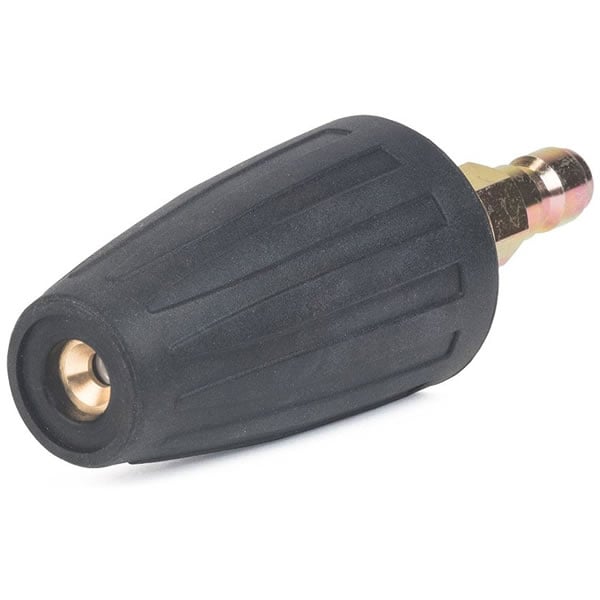
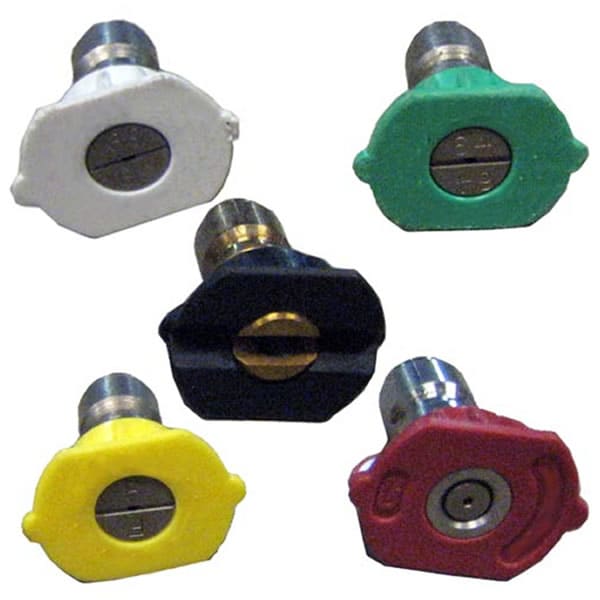 Picking the right turbo nozzle is similar to
Picking the right turbo nozzle is similar to 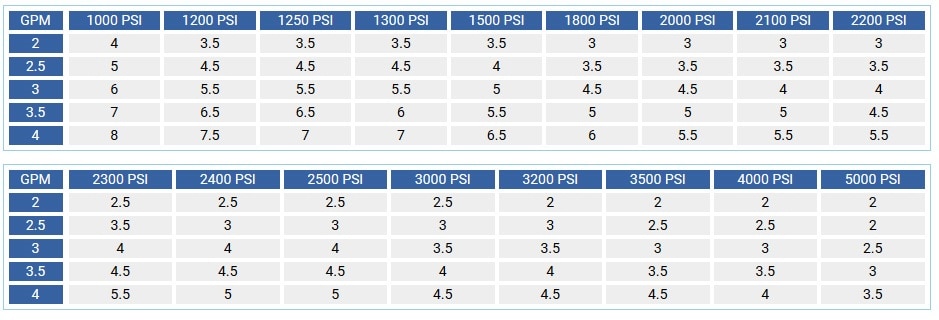
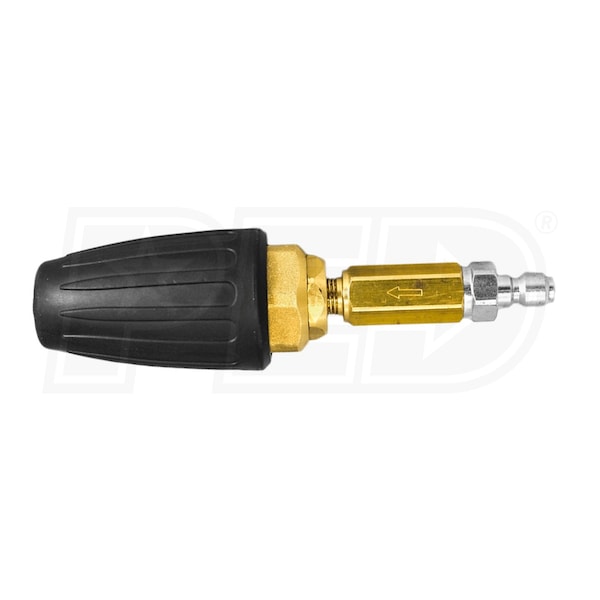 Most turbo nozzles contain elements of ceramic, alloy, aluminum, stainless steel, brass, and plastic. Turbo nozzles are designed to optimize and maximize the pressure you can get out of your pressure washer, all the while cleaning surfaces faster without exerting more effort.
Most turbo nozzles contain elements of ceramic, alloy, aluminum, stainless steel, brass, and plastic. Turbo nozzles are designed to optimize and maximize the pressure you can get out of your pressure washer, all the while cleaning surfaces faster without exerting more effort.